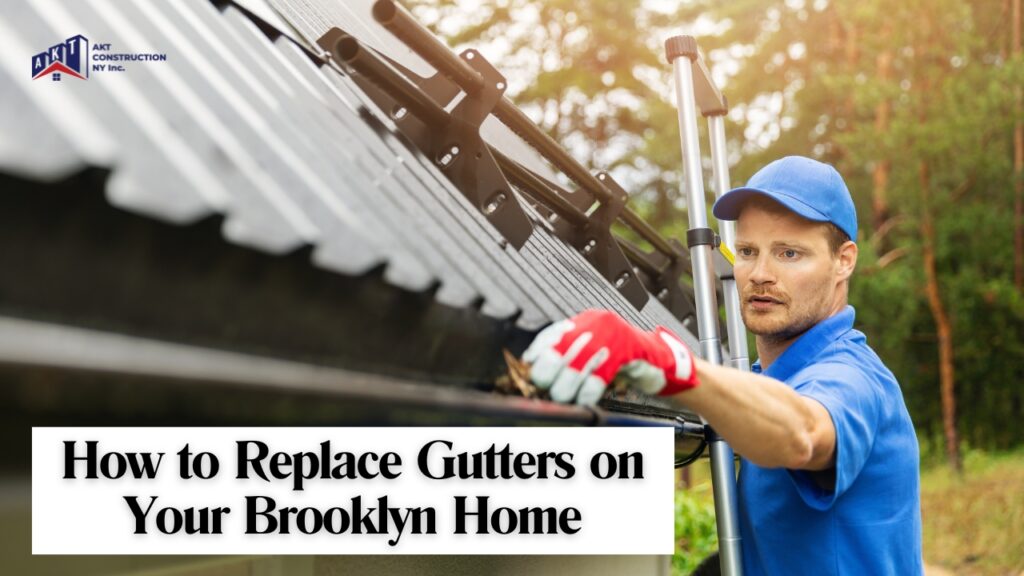Living in Brooklyn, I’ve seen firsthand how our weather can test the durability of a home. From heavy summer storms to the icy buildup in winter, our houses take quite a beating. Gutters are often overlooked until they fail. But trust me, they’re one of the most important defenses your home has. When gutters clog, crack, or pull away, water finds its way into places it doesn’t belong: basements, walls, and even your foundation.
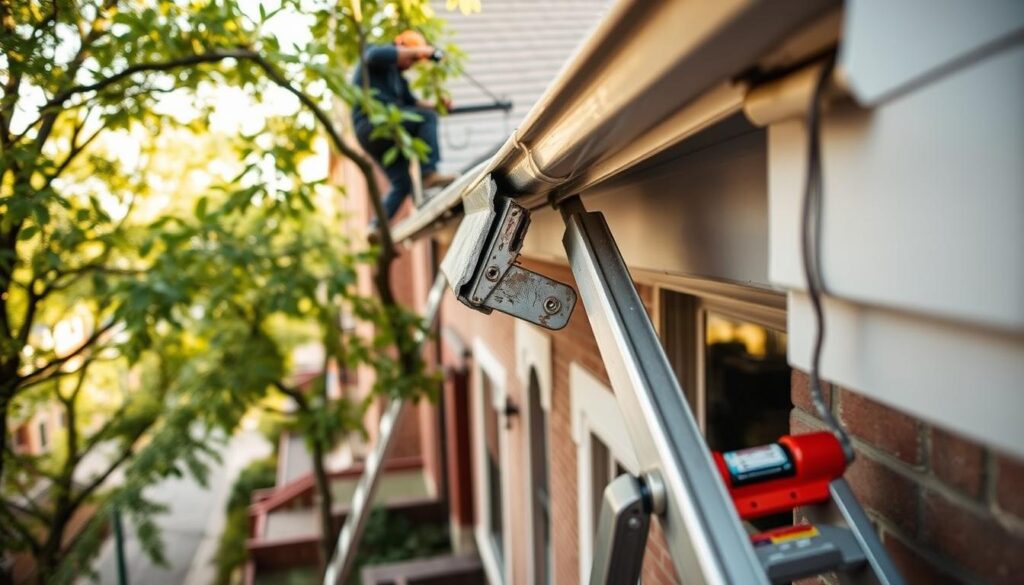
In this guide, I’ll walk you through exactly how to replace gutters on your Brooklyn home and overall gutter cleaning service in Brooklyn drawing on both my own experiences and the challenges I’ve helped clients overcome in neighborhoods like Park Slope, Bed-Stuy, and Bay Ridge.
Signs It’s Time to Replace Your Gutters
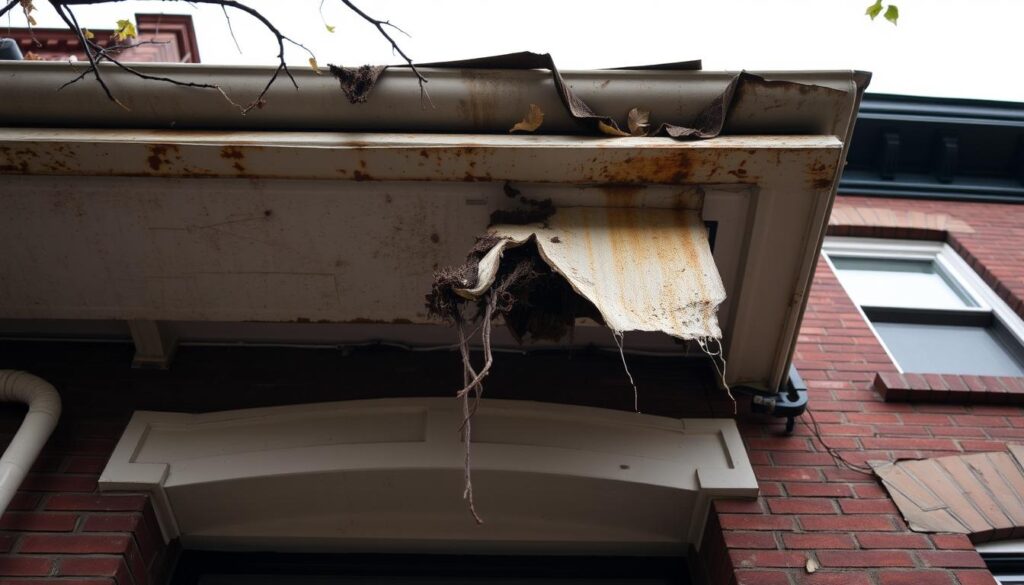
I always tell my clients, your gutters talk to you before they completely give up. You just have to know how to listen. Some of the clearest warning signs include:
- Cracks or rust: If you’re noticing visible splits or rust spots, no patch job will hold up for long.
- Sagging or detachment: Gutters pulling away from the roofline are not just inefficient; they’re unsafe.
- Water overflow: When rain pours over the sides instead of flowing through, your system is failing.
- Exterior damage: Peeling paint, mold, or water stains around your gutters mean water isn’t being managed properly.
- Brooklyn-specific headache: Leaves, soot, and rooftop debris pile up fast in the city, causing blockages and overflows.
If you’re nodding while reading this list, it might be time for a replacement.
Choosing the Right Gutter System for Brooklyn Homes
Not every home in Brooklyn is built the same. So, think about the difference between a historic brownstone in Clinton Hill and a newer townhouse in Williamsburg. The right gutter system depends on both design and weather demands.
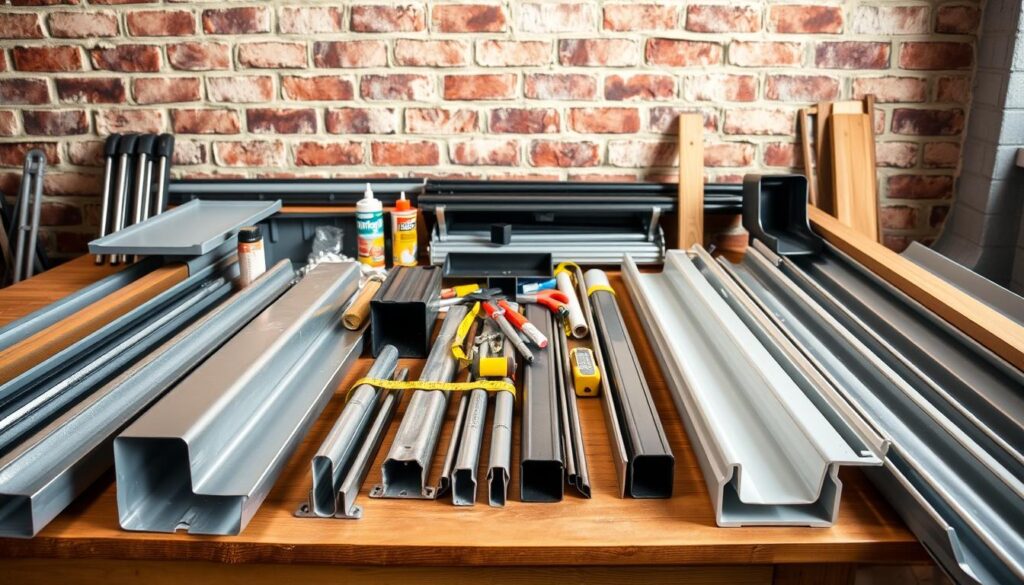
- Materials: Aluminum is affordable and lightweight, copper adds a classy touch to brownstones and lasts decades, while vinyl is cheaper but not always great for heavy NYC storms. Steel is tough; but it can rust faster.
- Styles: K-style gutters look sharp and handle a lot of water. They’re perfect for Brooklyn’s sudden downpours. Half-round gutters, on the other hand, match older, historic homes and add a timeless look.
- Capacity: With Brooklyn rainstorms, I always suggest larger gutters to prevent overflow.
- Extras: Gutter guards and leaf filters are lifesavers in areas with lots of trees (think Prospect Park South or Ditmas Park). They cut down cleaning time and extend gutter life.
Tools and Materials You’ll Need Before Starting
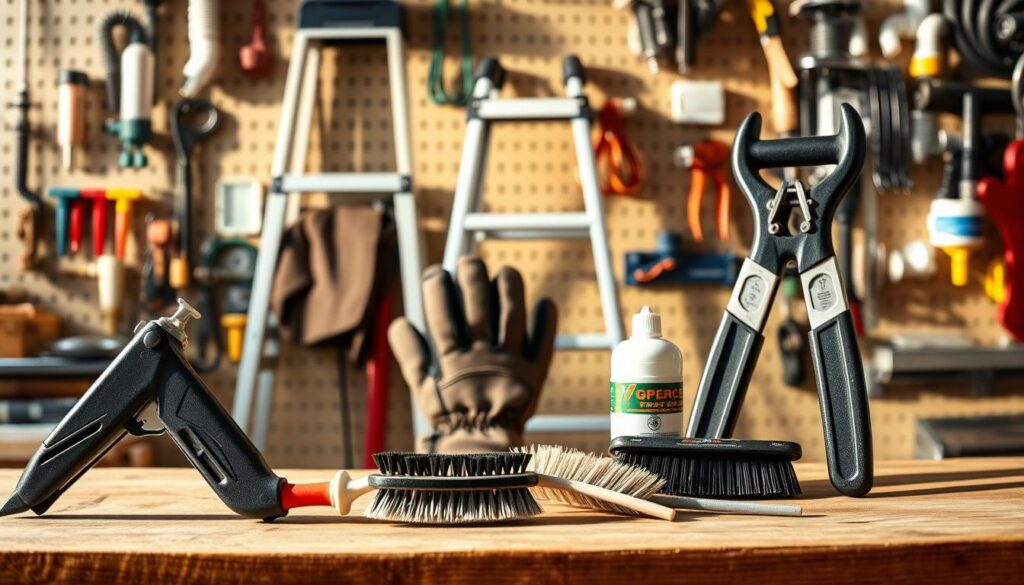
If you’re planning a DIY replacement, don’t start without the right tools. From personal experience, a missing piece of equipment can turn a two-hour job into a whole weekend project. You’ll need:
- A sturdy ladder (don’t use a shaky chair! I’ve witnessed too many accidents).
- Tape measure, chalk line, and a level for accuracy.
- Power drill and screws for securing hangers.
- Hacksaw or tin snips for cutting gutter sections.
- Sealant, hangers, and downspout elbows.
- Safety gear: gloves, goggles, and if you’re tackling a tall brownstone, a harness.
| Brooklyn twist: In neighborhoods with tight spaces, you may need to rent specialized ladders or scaffolding. I’ve had to do this more than once on narrow alleyways. |
Step-by-Step Guide: How to Replace Gutters on Your Brooklyn Home?
Replacing gutters isn’t rocket science, but it does require patience and care. Here’s the process of gutter cleaning service in Brooklyn I usually recommend:
1. Safely Remove the Old Gutters
The first step is taking down your old gutter system without causing extra damage. Don’t just pull or rip them off. The screws, nails, and hangers are often embedded in siding or roof edges. Start by loosening the fasteners with a drill or pry bar. Work slowly from one end to the other, supporting each section as you go so the metal doesn’t bend or tear into your home’s exterior. If your home is multi-story, secure your ladder and have someone assist you.
2. Measure Your Roofline with Precision
Accurate measurement is the foundation of a successful installation. Use a tape measure to carefully map out the length of each side of your roofline where gutters will go. Don’t round numbers off; be exact. A gutter that’s too short leaves gaps where water pours through, while a section that’s too long won’t fit cleanly, causing leaks at the joints. In Brooklyn’s older homes, rooflines are sometimes uneven, so double-checking measurements helps avoid surprises.
3. Install Hangers with the Right Slope
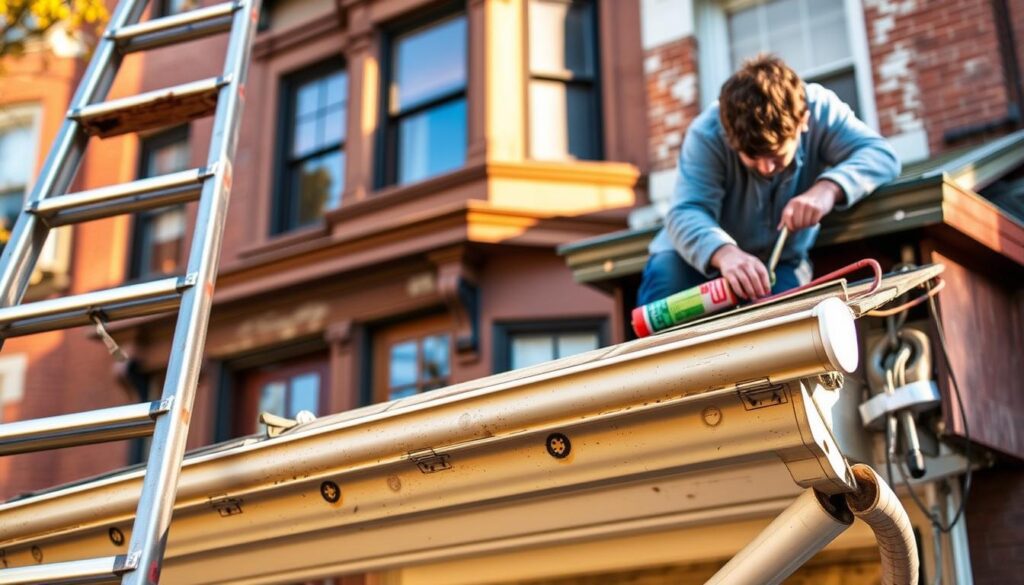
One of the biggest mistakes I see in DIY jobs is gutters installed perfectly flat. Water won’t drain unless there’s a slight slope toward the downspout. A good rule of thumb is about ¼ inch of slope for every 10 feet of gutter. Mark your high and low points with a chalk line before drilling in the hangers. Too steep a slope looks awkward, while too shallow leads to standing water; both of which you want to avoid.
4. Attach Gutter Sections Securely
Once hangers are in place, it’s time to attach the gutter sections. Start at one end and work toward the downspout location. Connect each section carefully, overlapping joints as directed by the manufacturer. Use high-quality gutter sealant to close gaps and prevent leaks. Cheap caulking won’t hold up against Brooklyn’s heavy rains and cold winters. Make sure every section is tightly locked into its hanger, as loose gutters can sag over time.
5. Add Downspouts for Proper Drainage
Downspouts are the exit points for all the water collected in your gutters, so their placement is critical. Position them at the corners of your home or wherever water naturally flows downward. In Brooklyn, where space between homes can be tight, I often recommend extending downspouts with splash guards or drain extensions so water doesn’t pool near foundations or seep into basements. Secure each downspout firmly with straps, and check that water flows away from the house, not back toward it.
6. Test the System Thoroughly
This is the step many people skip. But it’s one of the most important. Once everything is installed, run a hose or pour a bucket of water into your gutters to simulate rainfall. Watch closely to ensure water flows smoothly through the entire system and exits at the downspout without leaks or overflow. This quick test will save you from future headaches, letting you fix small issues immediately rather than after the next storm.
DIY vs. Hiring a Professional in Brooklyn
Now, here’s the big question I get all the time: Should I do the gutter cleaning service in Brooklyn by myself or hire someone professional?
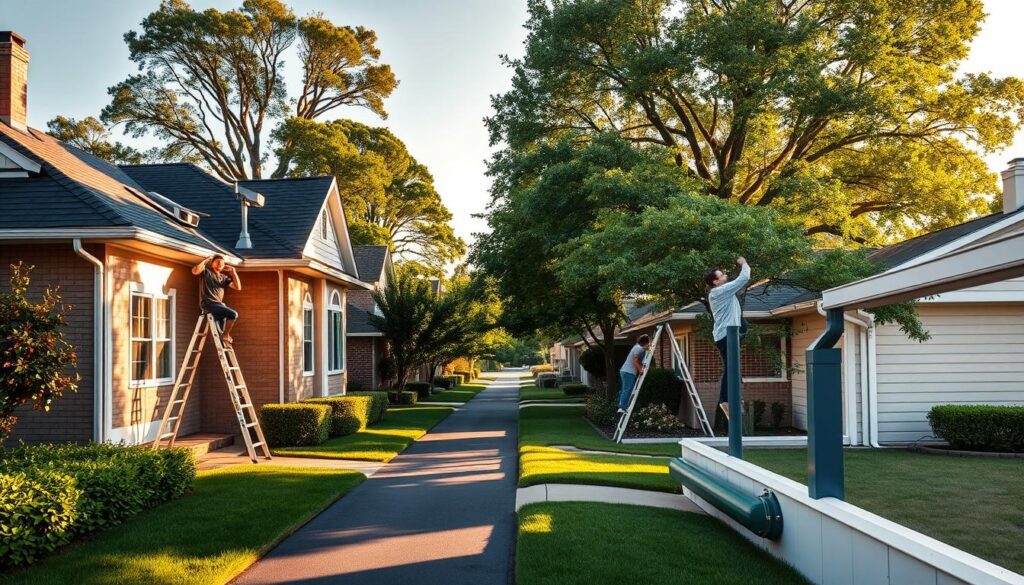
- DIY makes sense if you live in a single-story home, are comfortable on ladders, and have the right tools.
- Hire a pro if you own a multi-story brownstone or live in an area where ladder placement is tricky. In Brooklyn, narrow sidewalks and alleyways often make DIY unsafe.
| Note: On average, professional gutter replacement in Brooklyn costs $1,200–$2,500, depending on materials and home size. |
I always advise checking licenses and reviews before hiring. There are great contractors out there, like AKT Construction NY Inc., you can trust completely. But still, there are also a few who cut corners.
Common Mistakes to Avoid During Gutter Replacement
I’ve walked into too many homes where DIY gutter jobs went wrong. Here are mistakes you want to avoid:
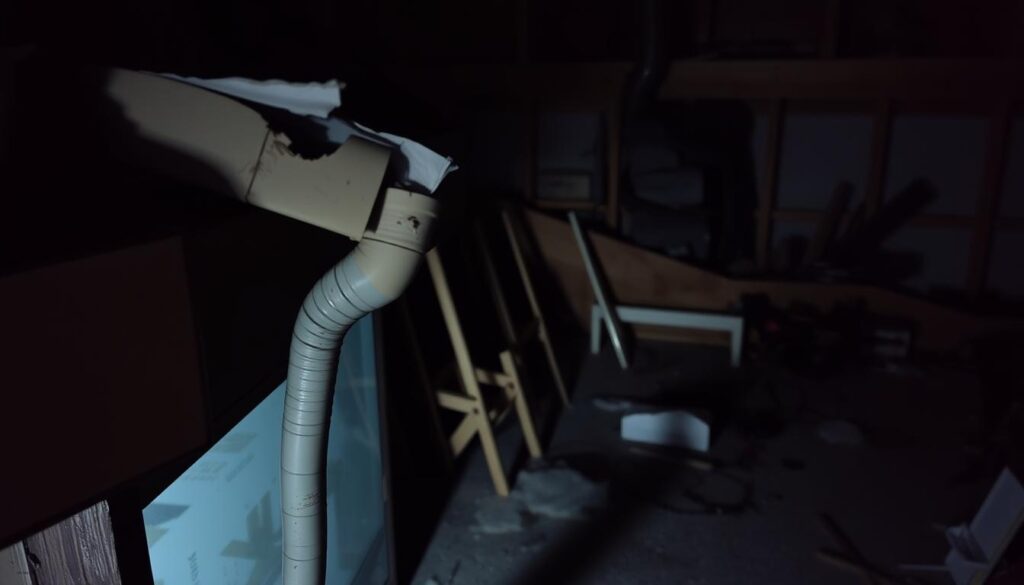
- Forgetting the slope, leading to standing water.
- Using too few hangers causes sagging.
- Placing downspouts in the wrong spot can lead to water pooling near the foundation.
- Skipping gutter guards in leaf-heavy neighborhoods.
- Most importantly, ignoring safety gear. A fall from a ladder isn’t worth saving a few dollars.
Maintenance Tips for Longer-Lasting Gutters

Replacing your gutters is only half the battle. It keeps them in good shape and protects your home year after year.
- Seasonal cleaning: Twice a year, especially after fall and spring storms.
- Storm checks: After heavy rain or snow, look for clogs or leaks.
- Flush downspouts: Hose them out to prevent buildup.
- Leaf guards: Invest in them if your home is surrounded by trees.
- Annual inspection: Even if you don’t see issues, a quick checkup keeps surprises away.
Eco-Friendly Gutter Options for Brooklyn Residents
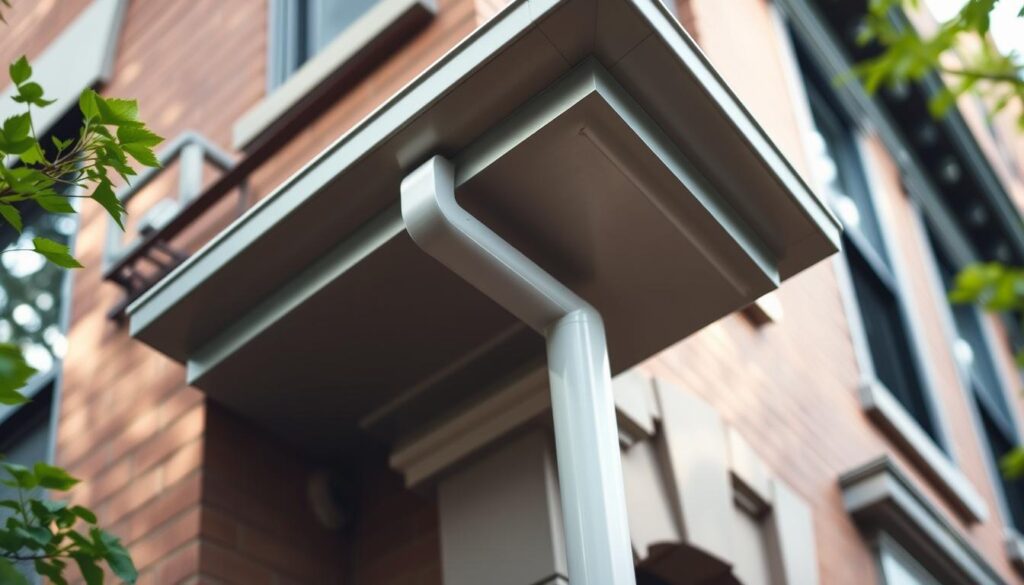
One thing I’ve noticed more Brooklyn homeowners asking about lately is eco-friendly options. Rainwater harvesting is becoming popular. So, you can direct your downspouts into rain barrels for gardening. Aluminum and copper gutters are recyclable and last longer, making them more sustainable. Choosing quality now also means less waste later.
Wrap Up
I’ve seen what neglected gutters can do: cracked foundations, moldy basements, even ruined facades on beautiful brownstones. But I’ve also seen the difference a good gutter system makes. Whether you’re tackling the job yourself or hiring a pro, replacing your gutters is an investment in your home’s safety and curb appeal.
If you’ve been putting it off, now is the time to take action. Your Brooklyn home deserves that protection. Still in doubt about how to replace gutters on your Brooklyn home or the perfect gutter cleaning service in Brooklyn? Just reach out to us at AKT Construction NY Inc. Let us help you replace your gutters hassle-free.

